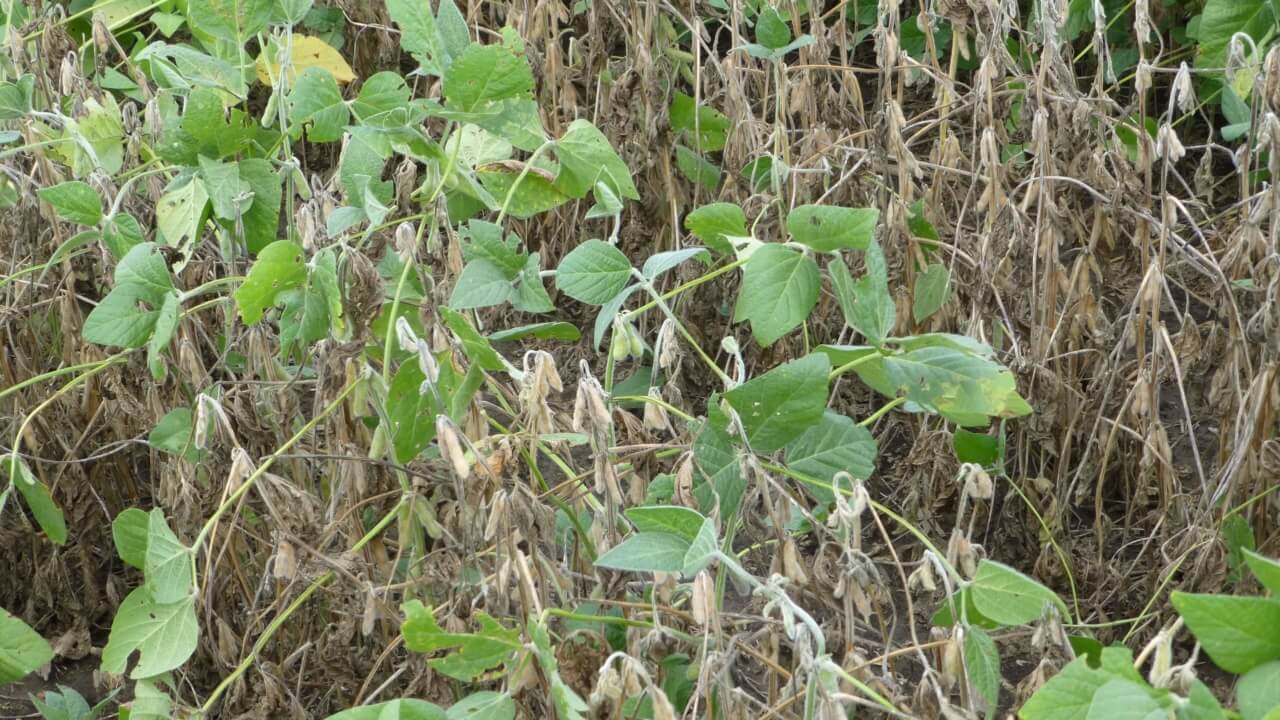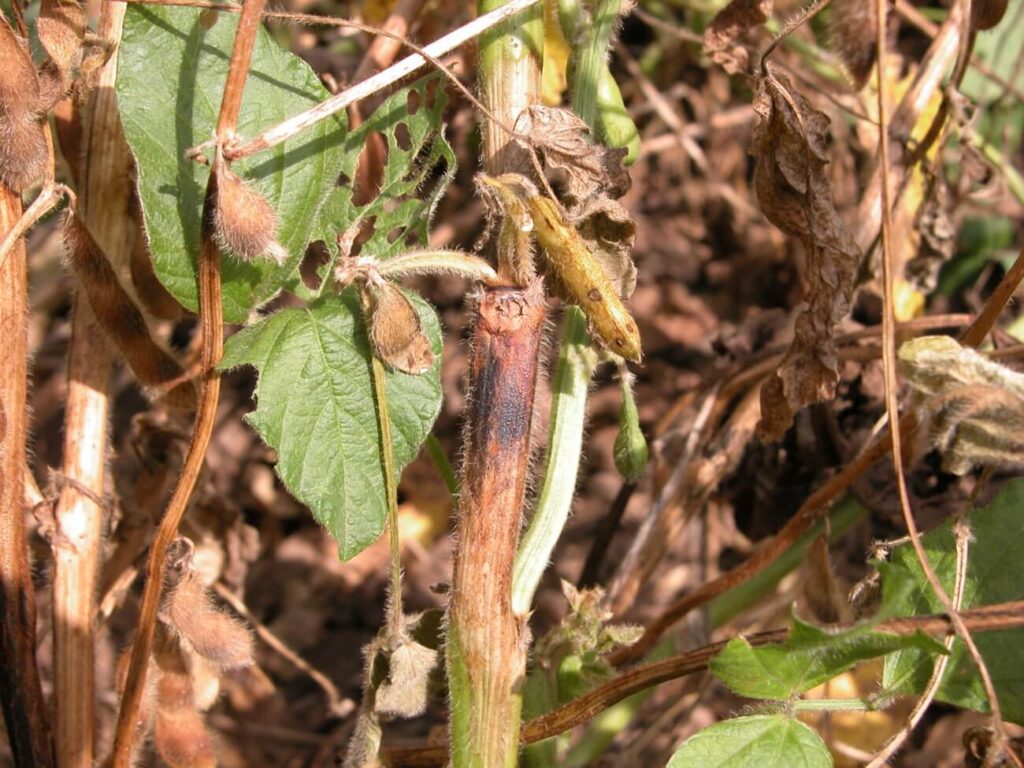
Soybean crops are prone to fungal diseases, which can significantly reduce yields if not properly managed. Two of the most common fungal diseases that affect soybeans are Stem Canker and Phytophthora. Stem Canker is caused by the fungus Diaporthe phaseolorum var. caulivora, while Phytophthora is caused by Phytophthora sojae. In this guide, we will discuss how to identify and manage these diseases to ensure a healthy soybean crop.

Stem Canker is characterized by small reddish-brown spots on stems near the anodes, which can girdle the plant, causing plant death from interrupted nutrient and water flow. To manage Stem Canker, it is recommended to plant resistant soybeans, rotates to a non-host crop for two years to reduce pathogen population, use tillage to help destroy infested residue, and apply a labelled fungicide at or before V3 infection may help protect plants. For later developments of the disease, ENVIGO 500 SC can be used to control infections of the stem.
Phytophthora is a root and stem disease specific to soybeans, and infection can occur at any development stage. The pathogen can remain dormant in the soil for at least four years and infects plants via zoospores, which are attracted to root exudates and can swim to their host through water in the soil. To minimize the impact of Phytophthora on soybean yield, it is recommended to rotate to non-host crops for at least four years and select varieties with resistance to the disease. Fungicides such as VICTORY 72 WP and AGRIPHITE 600 can also be used to manage Phytophthora infections.
In conclusion, managing fungal diseases in soybeans requires careful attention to plant health, timely identification of symptoms, and implementation of effective management strategies. By following the guidelines outlined in this guide, soybean growers can minimize the impact of Stem Canker and Phytophthora on their crops and ensure a healthy yield.
Resources: CROPSERVE Zimbabwe


















